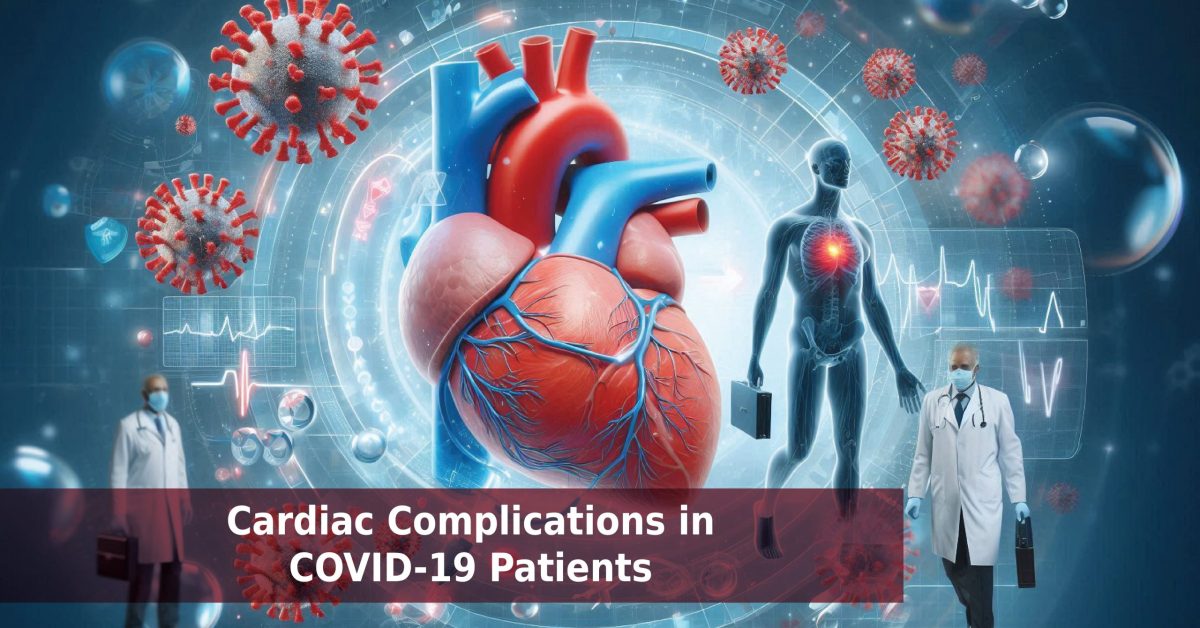Common Cardiac Complications in COVID-19 Patients
Several effects on the heart have been demonstrated. Researchers have identified several specific cardiac conditions in COVID-19 patients, and the severity of these conditions may vary depending on the patient’s general health and the severity of their COVID-19 infection.
Acute Myocardial Injury
Cardiac injury, which manifests in high concentrations of cardiac troponins, enzymes that are released into the bloodstream when the heart is damaged, is among the most frequent cardiac dysfunctions reported in COVID-19 patients. The studies reveal that COVID-19 patients have myocardial injuries ranging from mild to severe in 20–30% of cases while in the hospital. This damage is the result of either direct viral infection of the cardiac cells, hypoxia, or systemic inflammation. Consequently, myocardial injury is also identified as an important parameter that predicts high mortality among patients since those with high troponin levels are at a higher risk of death.
Acute myocardial injury can lead to several other complications due to the damage it has caused. For instance, patients may have heart failure in case the muscular walls of the heart are significantly damaged, leading to reduced capacity to pump blood in the body. It may, therefore, cause chronic heart conditions after recovery from the initial viral illness of the heart.
Myocarditis
Myocarditis, an inflammation of the heart muscles, is another extremely severe condition associated with COVID-19. The virus acutely infects the heart muscles, causing abnormal heart functions. Although there are many cases of viral myocarditis, it stratigraphically appears to be more frequent in patients with COVID-19 because the virus targets the ACE2 receptor in cardiac tissue.
The symptoms that one is likely to exhibit if he or she is suffering from myocarditis include chest pains, shortness of breath, and abnormal heart rhythms. The most severe form of myocarditis can result in heart failure, a long-term treatment plan, or a heart transplant. Since most of the patients with myocarditis have similar signs and symptoms as those with COVID-19, it may be rather difficult to establish myocarditis in COVID-19 patients. But the inflammation in the heart muscles cannot be diagnosed by non-invasive tests; other tests like magnetic resonance imaging (MRI) can help detect it.
Arrhythmias
Another cardiovascular-related issue that has been noted amongst COVID-19 patients is ‘arrhythmias,’ which simply means an irregular beating of the heart. These patients’ arrhythmias have a complex etiology, with predisposing factors including electrolyte disturbances, hypoxic state of the tissues, systemic inflammation, and the medication they are taking. Furthermore, studies have proven that some COVID-19 therapies, such as hydroxychloroquine in combination with azithromycin, increase the risk of arrhythmias.
There are different kinds of arrhythmias that patients can have, ranging from simple palpitations to lethal ventricular tachycardia or fibrillation. Therefore, arrhythmias in severe conditions may result in sudden cardiac arrest, especially in patients with compromised heart disorders.
Thromboembolism and Pulmonary Embolism
Researchers have observed a correlation between COVID-19 and the development of blood clots, also known as hypercoagulable states. This coagulative state may result in thromboembolic conditions, in which clots occur in the blood vessels and block blood circulation to organs in the body. When such clots form in the arteries that supply blood to the heart, a heart attack results. Similarly, clots in the lungs’ blood vessels lead to pulmonary embolism, a condition that restricts blood flow to the lung tissues.
The management of COVID-19, particularly among hospitalized patients, has incorporated anticoagulant therapy. However, managing these treatments is difficult because there is always a problem of bleeding on one hand and clot formation on the other. Anticoagulation may be required in cases with thromboembolic complications, so long-term follow-up may be required in most patients.
Long-Term Cardiovascular Implications of COVID-19
While the majority of infected patients that go through the acute phase of COVID-19 have no long-term consequences, emerging studies indicate that some may It is still noteworthy to discover that some patients may have persistent cardiovascular problems even after the acute phase of the disease. This is commonly labeled as ‘long COVID’ and results in symptoms that include fatigue, chest pains, and a shortage of breath. Such symptoms may herald heart injury or dysfunction, even in patients with minimal manifestations during the initial phase of the COVID-19 illness.
Particularly, certain chemotherapeutic drugs can cause myocarditis and acute myocardial injury, both of which can have long-term effects on the heart. Research into COVID-19’s effects on myocardial involvement revealed that patients with COVID-19-related myocarditis faced a high risk of heart failure, which significantly reduced their quality of life. Furthermore, some of the patients may have developed cardiac abnormalities during their illness, such as arrhythmias or thromboembolic events, and require follow-up care and additional medication to prevent the occurrence of new cardiac events.
The real extent of COVID-19’s impact on the cardiovascular system has not been fully documented; however, physicians will have to screen those patients who recovered from COVID-19 for potential signs of cardiological problems for a long time. Such measures may include annual/biannual, invasive, and non-invasive cardiovascular tests, including stress tests, imaging, and blood work to gauge the condition of the patient’s heart.
